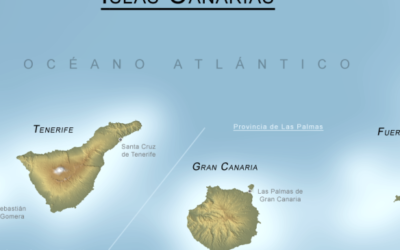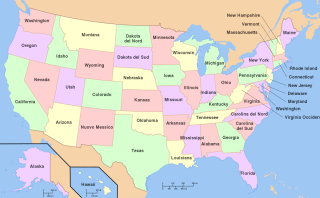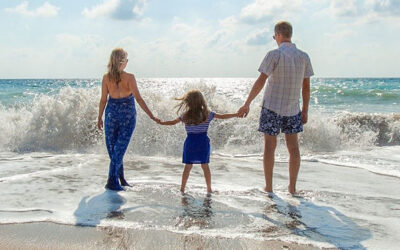Surfing – choose the right training and board for this sport.
Wave Surfing is one of the most fascinating and engaging Water Sports in the world, which combines adrenaline, balance and connection with nature. The choice of Board is essential to fully enjoy this experience, since the characteristics of the waves and the level of experience of the surfer play a crucial role in selecting the most suitable type of board.
There are different types of Surfboards, each designed to suit specific sea conditions and the skill level of the surfer. Wave Surfboards can be divided into three main categories : Longboards, Shortboards and Funboards.
Each of these categories has its own peculiarities that make them suitable for different situations.
- The Longboard is the most classic and traditional board, characterized by a long and stable shape. This type of board is ideal for beginners and for surfing longer and less powerful waves. Thanks to its stability, the longboard offers a safe platform to learn the basics of surfing, such as positioning and paddling.
- Shortboards, on the other hand, are shorter, more agile boards designed to handle faster, steeper waves. They are the preferred choice of more experienced and skilled surfers, capable of performing advanced maneuvers such as tight turns and aerials. These boards require a higher level of balance and responsiveness, making them less suitable for beginners.
- Funboards, as the name suggests, are a compromise between longboards and shortboards. They are intermediate in size and offer a combination of stability and maneuverability. Funboards are suitable for intermediate surfers who want to challenge more challenging waves without completely sacrificing the stability of the board.
In addition to the length of the board, another crucial aspect to consider is the profile and shape of the nose. Boards can be classified according to their shape, such as fish, gun, malibu, and others. For example, fish boards are short and wide, ideal for small and soft waves. Gun boards, on the other hand, are longer and thinner, designed to tackle giant and powerful waves.
The choice of board should also be influenced by the sea conditions. Smaller and longer waves require longer and more stable boards, while faster and steeper waves require shorter and more maneuverable boards. Additionally, the shape of the board can affect the ability to perform specific maneuvers, such as carving or tube riding.
The experience level of the surfer is another crucial factor in board selection. Beginners will benefit from longer, more stable boards to learn the basics of surfing, while more advanced surfers may opt for shorter, more responsive boards to tackle more challenging waves.
In short, surfing is a sport that offers a wide range of experiences and challenges, and choosing the right board is essential to maximizing your enjoyment and safety on the board. Whether you are a beginner looking to learn the basics or an experienced surfer looking for a new challenge, there is a board to suit your needs and the conditions you want to tackle. The diversity of surfboards reflects the complexity and beauty of this sport, which continues to fascinate and engage enthusiasts around the world.
The world of wave surfing is characterized by a variety of boards that suit different sea conditions and surfer experience levels. In addition to the main categories of longboards, shortboards and funboards, there are subcategories and specialized models that focus on particular aspects of surfing. Understanding the different options available can make the difference between a satisfying wave surfing session and a frustrating one.
- Fishboards, for example, are a subcategory of shortboards that have gained popularity for their unique design. Characterized by a short, wide, and pointed shape, fishboards are ideal for smaller, softer waves. These boards offer more buoyancy than traditional shortboards, allowing surfers to catch waves with ease even in less than ideal conditions.
- Gunboards, on the other hand, are designed to handle big waves. Long and thin, gunboards provide the stability needed to navigate the biggest waves. They are commonly used in environments like reef breaks, where the power and speed of the waves require a board that can keep up.
- Malibu boards are a versatile option, often chosen by surfers of all levels. With a longer shape than shortboards and a more articulated profile than longboards, malibu boards combine the stability of a longboard with the maneuverability of a shortboard. They are ideal for intermediate surfers looking to progress their skills and tackle a variety of wave sizes.
In addition to the shape, the material of the board is another crucial aspect. Boards can be made of various materials, including polyurethane, expanded polystyrene, and advanced composites. The choice of material can affect the weight of the board, its flexibility, and its strength. Lighter boards may offer greater maneuverability, while heavier ones may have greater stability in rougher winds or waves.
For beginners, it is essential to start with a wave surfboard that is appropriate for their experience level. Longer, more stable boards provide a safe platform for learning to paddle, position yourself on the board, and catch your first waves. As surfers gain confidence and improve their skills, they can move on to shorter, more responsive boards.
The importance of balancing the length and width of a board cannot be overstated. A wider board offers more stability, making it easier to learn, but can compromise maneuverability. On the other hand, a narrower board can be more responsive, but requires more control and balance from the rider.
The process of selecting the ideal board is a personal journey that involves experimentation and adaptation to specific sea conditions and individual preferences. Experienced surfers often have more than one board in their arsenal, allowing them to tackle a wide range of waves and conditions.
In conclusion, wave surfing is a unique experience that offers exciting challenges and opportunities for personal growth. Choosing the right board is a fundamental step in maximizing the enjoyment and adaptability of the surfer to the changing conditions of the sea. Experimenting with different boards and understanding the specific features that suit your needs will help create a deeper connection with this fascinating sport. Whether you are an enthusiastic beginner or a seasoned surfer, there is a perfect board for every wave and every skill level.
Wave Surfing, Weather and Bathymetry
For the passionate surfer, choosing the ideal conditions is crucial to ensure a satisfying and safe experience. The combination of meteorological and bathymetric factors directly influences the formation of waves and the quality of surfing in a given location.
Weather conditions are one of the most important aspects to consider. Wind, rain, temperature, and wind direction can greatly affect the quality of the waves and the overall surfing experience. First and foremost, it is essential to keep an eye on the direction and intensity of the wind. Waves usually form when the wind blows steadily across the surface of the ocean, creating lift that results in waves.
A steady wind blowing from the sea toward the land is often ideal for creating quality waves. This type of wind, known as offshore wind, sweeps water away from the crests of waves, keeping their faces vertical and allowing surfers to perform smoother, more controlled maneuvers. In contrast, a wind blowing from the land toward the sea, called onshore wind, can ruin the shape of waves, making them choppy and more difficult to ride.
Temperature is another factor to consider, although it can vary based on the surfer’s personal preferences. Some prefer cold waves and cooler weather, while others like warm, sunny days. Water temperature is especially important, as it affects a surfer’s clothing choices. Many surfers opt for thicker wetsuits in the winter and lighter wetsuits in the summer to accommodate the thermal conditions.
Rain can affect surfing conditions, but its significance depends on the duration and intensity. Light rain may not have a significant impact, but heavy rainfall can affect visibility and wave formation. Additionally, rainfall can lead to water contamination, requiring increased attention to personal safety and hygiene.
Waves form when energy concentrates on a specific point on the ocean floor and moves toward the shore. Surfers often look for places with a good combination of bathymetry and ocean currents to make the most of the available waves. Bigger, more powerful waves are often associated with deeper water, while smaller, more playful waves can form in shallower water.
Break points, where waves begin to break, are especially important to surfers. Positioning yourself correctly for these points is crucial to catching waves in the best way. Experienced surfers carefully study the bottom and break patterns to find the best spots to get into action.
Additionally, surrounding topography can have a significant impact on wave formation. Inlets, headlands, and other natural features can influence the direction and height of waves, creating different opportunities for surfers along a given coastline.
Ultimately, choosing the right conditions for surfing is a delicate balance between various meteorological and bathymetric factors. Experienced surfers develop a deep understanding of how these elements interact in a given location and know when is the best time to take action. The passion for surfing drives many to explore different locations, each with its own unique characteristics, offering a wide range of experiences that make this sport so exciting and compelling.


